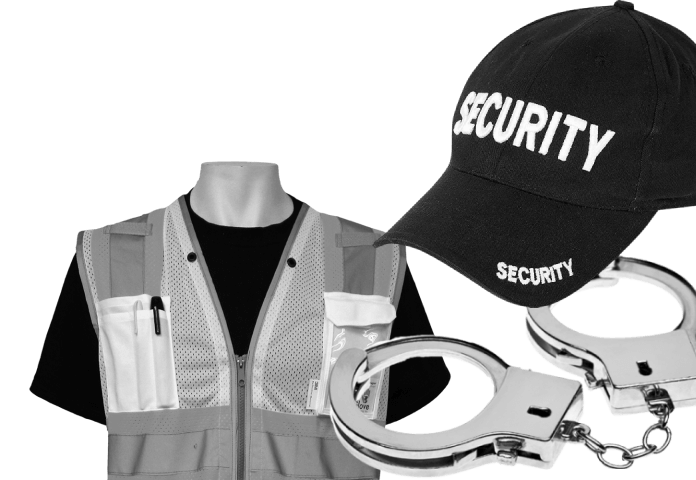POPULAR COURSES

ALL COURSES
- Basic Handcuff Training
- CCTV Training
- Close Protection Training
- Door Supervisor Training
- L2 Award for Cash And Valuables In Transit (CViT)
- Security Drone Pilot
- Security Guard Training
- Security Screening BS7858
- SIA Top-up Refresher Training for Door Supervisors
- SIA Top-Up Training for Close Protection
- SIA Top-Up Training for Door Supervisors
- SIA Top-Up Training for Security Guard Licence
POPULAR LICENCES
ALL LICENCES
POPULAR COURSES

ALL LOCATIONS
- London-Ruislip
- Aberdeen
- Aylesbury
- Barnsley
- Belfast
- Birmingham
- Birmingham-Central-Hagley Road
- Birmingham-Central-Icknield Port
- Bradford
- Brighton
- Bristol
- Bushey
- Camden
- Cardiff
- Chatham
- Chelmsford
- Cheltenham
- Chester
- Colchester
- Coventry
- Crawley
- Derby
- Durham
- Edinburgh
- Glasgow
- Gloucester
- High Wycombe
- Hull
- Ipswich
- Leeds
- Leicester
- Liverpool
- London-Acton
- London-Barnet
- London-Beckenham
- London-Bermondsey
- London-Bromley
- London-Central
- London-Clapham
- London-Croydon
- London-Ealing
- London-Enfield
- London-Finsbury Park
- London-Hanwell
- London-Harrow
- London-Hayes-and-Southall
- London-Holborn
- London-Ilford
- London-Putney
- London-Russell Square
- London-Stratford
- London-Tottenham Court Rd
- London-Wembley
- London-Willesden Green
- London-Wimbledon
- London-Wood Green
- Luton
- Manchester
- Manchester-Central
- Milton Keynes
- Newcastle Upon Tyne
- Newport
- Norwich
- Nottingham
- Oban
- Oldham
- Peterborough
- Plymouth
- Portsmouth
- Preston
- Reading
- Sheffield
- Slough
- Southend On Sea
- Stoke-on-Trent
- Sunderland
- Swansea
- Swindon
- Walsall
- Watford
- Basingstoke
- Birmingham
- Bristol
- Cardiff
- Derby
- Leeds
- Leicester
- London-Central
- London-Croydon
- London-Euston
- London-Finsbury Park
- London-Holborn
- London-Marylebone
- London-Russell Square
- London-Tottenham Court Rd
- London-Wood Green
- Luton
- Manchester
- Manchester-Central
- Milton Keynes
- Newcastle Upon Tyne
- Newport
- Nottingham
- Portsmouth
- Sheffield
- Slough
- Zoom

Basic Handcuff Training in Liverpool
The Handcuff Training Course provides individuals with a basic Introduction to Handcuffing and Physical Intervention.




Secure your SIA Licence and elevate your career potential now
Book Now



Course Name
Basic Handcuff
Not in Liverpool?
Find your nearest courseSIA Door Supervisor Training in Manchester
Looking to kick-start a career as a Door Supervisor? Taking the next step in your career can be overwhelming, especially when further training is involved.
The Door Supervisor Training course is a compulsory requirement for individuals looking to get an SIA Licence.
By training as a door supervisor, you’ll gain instant access to job opportunities across the booming £6 billion private security industry, opening doors to hundreds of new roles.
Increase your options ✅
Choose between a variety of exciting roles in retail security, door supervision, corporate security, and event security - work full-time or part-time
Work flexible hours ⏰
Own your schedule! The SIA door supervisor course opens doors to greater job flexibility across roles.
Get hired, fast ⚡️
Once you're qualified, use our security job board to apply for newly posted security jobs.
Take the first step and book your SIA Door Supervisor Training course
How to get your SIA Door Supervisor Licence in Manchester
Getting your SIA Door Supervisor Licence involves the following steps:
Step 1 ➡️ Get Training
Book your SIA Door Supervisor course in Manchester. This is a 6-day training course.
Click here to view course dates and pricesStep 2 ➡️ Get Certified
At the end of the course, you'll sit through 4-Multiple Choice Question Exams. With our High Pass rates you have nothing to worry!
Step ➡️ Get Licensed
The results for the course will be available in 5 working days*. Once you pass, you can apply for your SIA licence
*Result times may vary depending on the course plan you purchase.
Watch Carl from Get Licensed vlog his entire course journey here:
Take the first step and book your SIA Door Supervisor Training course
Security Jobs in Manchester
Manchester being a major city in the UK, has plenty of security jobs available ranging from Manned Guarding, Static Guarding, Patrolling, Key Holding, CCTV operator and Door Supervision. With a vibrant nightlife and plenty of pubs, clubs, bars and restaurants, demand for security jobs is rising. However, most SIA licence holders in Manchester do not work in the nighttime and cover other roles.
The SIA Licence is very versatile and will allow you to work in many different roles:
✅ Bars, Pubs, Restaurants
✅ Music Events
✅ Festivals & Concerts
✅ Retail Security Guarding
✅ Office Receptions
✅ Warehouses
✅ Shopping Mall
Take the first step and book your SIA Door Supervisor Training course
About the SIA Door Supervisor Training course in Manchester
The course runs over 6 consecutive days and is divided into 4 units and covers everything from the legal aspects of working in security to the latest physical intervention techniques. NEW SIA Course Update (April 2021) From April 1st this course will become a 6 day course instead of a 4 day course. In addition, you must have a first aid qualification before you can take the training. This should be an Emergency First Aid at work certificate or higher.
FREE Door Supervisor Course Sample Lesson
Wondering what you will learn on the course?
Below is the first training video that Door Supervisors will experience on their journey to becoming qualified. For the first time ever, we are offering this unit 1 training for free.
Take the first step and book your SIA Door Supervisor Training course
Faqs
The aim of the course is to give positive guidance to staff regarding the use of handcuffs and serve as a reference for staff in justifying the use of handcuffs both in terms of policy (who and why do we handcuff) and technique (how do we handcuff).
There is no exam for this handcuff-training course. This is an interactive course and you will be assessed throughout the duration of the 3 hour course. When you have successfully demonstrated that you can use handcuffs correctly, your trainer will give you your certificate.
This course is well suited for any security personnel working within the security industry. This handcuff-training course teaches vital skills on how to safely apprehend someone. This course will also make you more eligible for employment.
It’s easy peasy. You can either book online or you can book through our 24/7 customer service line on 0207 078 7259.
Get Licensed are proud to provide you with a ‘Faster Results’ service for selected courses and locations. Receive your results within just 5 working days after your course is completed. Our aim is to notify you on the same day the training provider sends us your results. Your results will be available online and we’ll also send you an SMS to inform you when your results are available.
To read our full list of FAQ's, click here.
Service areas for Birmingham
What is covered on this course?
By the end of this course you will be able to:
Is it legal for security officers to use handcuffs?
When should handcuffs be used?
Officer may employ the use of handcuffs on reasonable grounds when:
The justified use of handcuffs is governed by Section 3 of the Criminal Law act which clearly states:
Common Law and use of Force In the UK the use of force on an individual is considered unlawful unless the following circumstances prevail:
Justified use of restraint
Interest-free Instalment Plans
Can't pay at once? Choose one of our interest-free instalment options at checkout.

Pay after 30 days or in 3 instalments
3 monthly instalments
Check out with Klarna
Select Klarna at checkout
Choose your payment option
Choose to pay after 30 days or in 3 monthly instalments
Make the first payment
Receive an approval decision and pay accordingly
Check out with Paypal
Proceed to checkout and choose to pay with PayPal pay in 3
Choose “Pay in 3”
Select PayPal pay in 3 as your payment method. Your eligibility will be determined by PayPal.
Learn more
Make the first payment
Pay the first instalment right away. Remaining two will be collected on the same day every month.


How much can you earn?
Earnings Calculator
£25,200
£2,100
£15
Is this course right for me?
Answer a few simple questions and find out if this is the right course for you.
Are you over 18?
Unfortunately to work in this industry you will need to be over 18.
How do you react in stressful situations?
Unfortunately this course is best for people who have good reactions to stress
Which one of these statements is true about you?
Unfortunately a great candidate for this course should have great attention to detail.
Which of these words best describes your personality?
To succeed in this industry you need to have a certain personality. This characteristic isn't the best for this.
Exam Preferences


Do you need help?





Calculating your quote
Loading...
Your quote is
You will be contacted within 24hrs
Quotation is sent over email

Get Licensed is a registered trademark of Get Licensed Limited. Get Licensed is a training & staffing platform - we help people book training courses with approved providers and help them find work.
Company
Partners
Mobile Apps
Popular Licences
Popular Exams
Training Locations
- Security Training in Birmingham
- Security Training in Brighton
- Security Training in Bristol
- Security Training in Leeds
- Security Training in Manchester
- Security Training in Liverpool
- Security Training in London Central
- Security Training in Nottingham
- Security Training in Portsmouth
- Security Training in Sheffield
Resources
Cookies
We use cookies to enhance your experience on our website. By continuing to use our website, you consent to the use of cookies.
For more information, please see our Cookie Policy.

 Trustpilot
Trustpilot














 Chat With Us
Chat With Us




